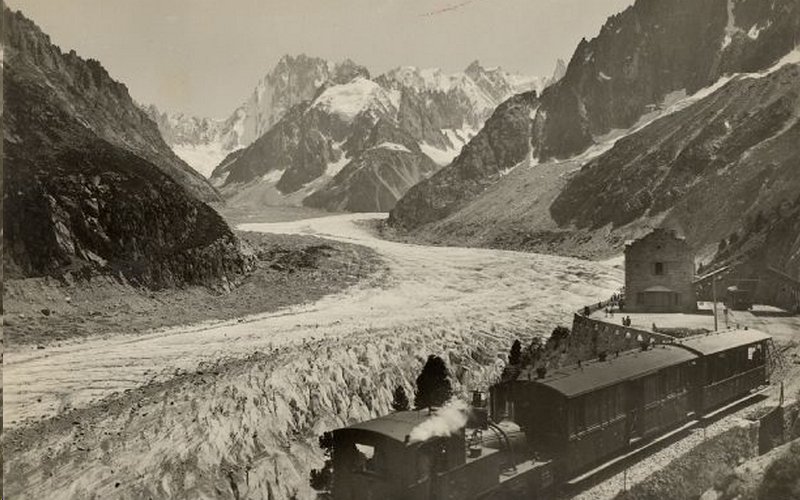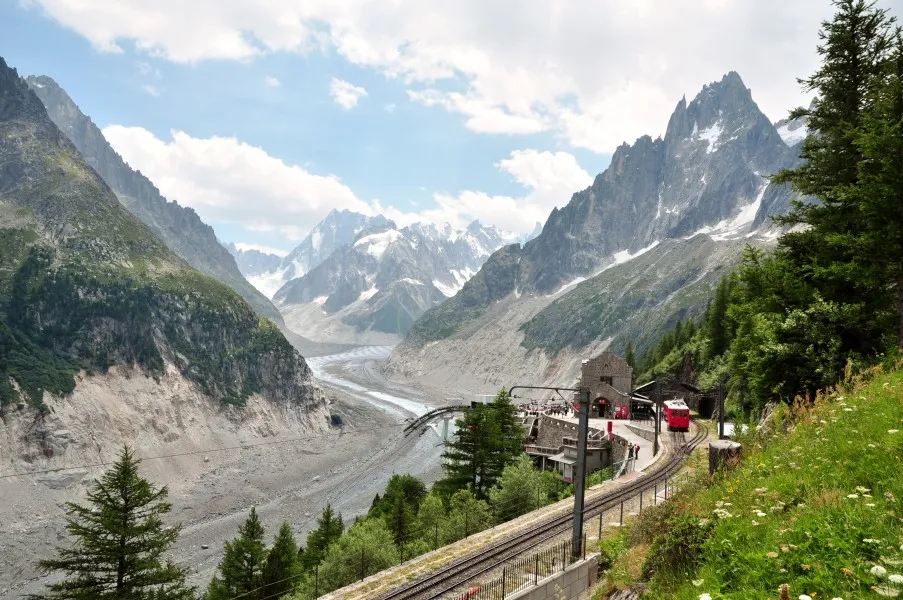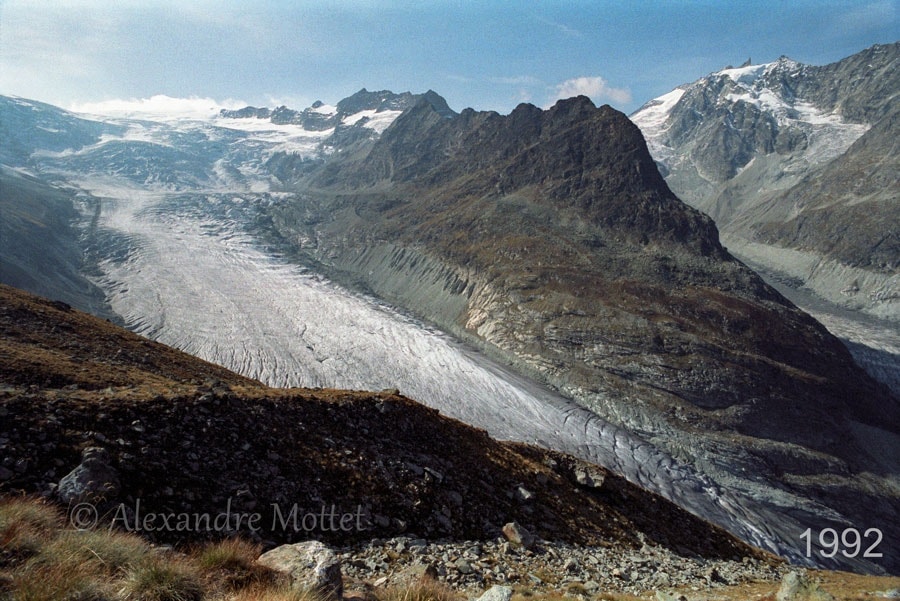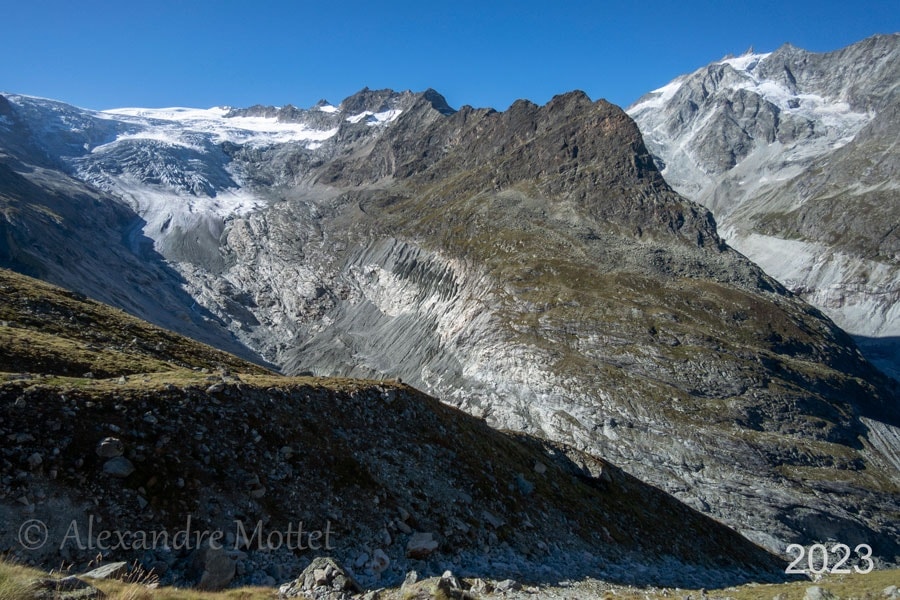The alarming melting of the Alps glaciers due to global warming
The Mer de Glace: A Melting Jewel
The Mer de Glace is a valley glacier in the Alps located on the northern slope of the Mont-Blanc massif, in the French department of Haute-Savoie. It is formed by the confluence of the Tacul glacier and the Leschaux glacier and flows into the Chamonix valley, within the territory of the municipality of Chamonix-Mont-Blanc, giving rise to the Arveyron. The glacier stretches over seven kilometers in length, its feeding basin has a maximum length of twelve kilometers and an area of 40 km2, while its thickness reaches 300 meters. In the 17th century, the glacier descended into the valley. The glacier's retreat, measured since the 1860s, has resulted in a loss of 120 meters in thickness over a century in its terminal part.
 Mer de glace in 2023
Mer de glace in 2023

Evolution of the average temperature in Chamonix since 1950
Ferpècle Glacier: A striking contrast between 1992 and 2023
The Ferpècle Glacier, although less known, is not exempt from the general trend. Photos taken in September 1992 and September 2023 show a marked decrease in its area.
 2023
2023

The temperature graph of the Grächen weather station since 1968 also shows an increase
Moiry Glacier: Another Alpine jewel in peril
The Moiry Glacier, located in Switzerland, is not spared from the effects of climate change. A comparison of photos taken in 1995 and in 2023 shows a significant reduction in its size.
 2023
2023

The graph from the Lugano weather station (ECAD) shows a rise in temperatures since 1900.
Glacier Melting: Why is it concerning?
The melting of glaciers is not just an alarming visual phenomenon; it has profound consequences on our environment and societies. Glaciers play a crucial role in regulating global climate and serve as freshwater reservoirs for billions of people. Their rapid melting leads to a rise in sea levels, threatening coastal areas and small islands. Moreover, the disappearance of glaciers disrupts local ecosystems and threatens biodiversity.
Global warming, primarily caused by human activities such as the burning of fossil fuels, deforestation, and industrialization, is the main culprit behind this rapid melting. It is imperative that we take measures to reduce our carbon footprint and protect these natural treasures for future generations.
